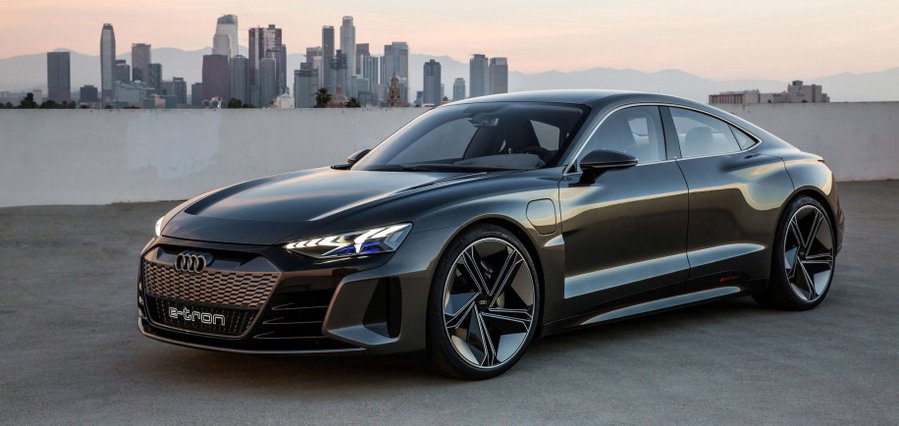Audi E-Tron GT aims to win customers over on style

Audi's E-Tron GT is the second vehicle from the four-ring brand's new, battery-electric, lower-case sub-moniker. As its name implies, it is a grand tourer — a four-door, four-passenger fastback about the size of the A7, but interestingly enough with diminished interior space. This denies the magic trick of volume that is possible because of the intrinsic packaging advantages of electric vehicles, which obviously lack an engine up front and typically locate their motors at the wheels, and thus can allow for much greater passenger space than a similarly sized internal combustion vehicle. But this decision was intentional for this more premium, super-sports car.
Marc Lichte, the head of Audi design, tells us "this is a very low car with big wheels. It still has classic proportions, but gorgeous proportions. And the overhang is a lot shorter and the bonnet is a lot lower than on an internal combustion engine vehicle."
The E-Tron GT shares its underpinnings with Porsche, which will use the same scalable electric-powered platform for its upcoming Taycan sport sedan. These brands have shared platforms before, most recently mainly for crossovers. This new package represents something of a fresh move for the VW Group cousins, not only because it is the first time they are each developing an electric vehicle, but because they are developing it together to serve different needs.
"The wheelbase, track and wheel arch openings are shared with the Porsche. But there is only one piece of design we share with Porsche. It's the windshield," says Lichte. "When we designed this car we took car to make sure the Audi looked like an Audi and the Porsche like a Porsche, and we came together once every three months to make sure this was the case."
This kind of platform sharing in an electric vehicle presents its own set of challenges, especially when one of the companies — Audi in this case — is a much higher-volume manufacturer. The brand sold nearly 1.9 million vehicles worldwide last year to Porsche's 250,000 — about eight times as many. They are both premium products, but an Audi must be more things to more people.
"It's not like today with an ICE engine, where the flat-six or the turbo V6 provides the character," says Lichte. "But with the battery electric vehicles these cars will very much have its own character. Our core in exterior design is Quattro. It's a powertrain concept. Since our new lineup we've visualized Quattro in the exterior design. It's this blister is becoming a sculpture. When we took over the platform, there are some fixed hard points, but to design them to that they are not visible. This is difficult, but I think we got that."
One of the most interesting thing about these initial vehicles from mainstream luxury manufacturers is the ways in which they're meant not only to act as halo products for their respective brands — showing off their forward thinking — but gateway products to usher a new group of consumers into the emerging electric vehicle market. As such, they have to take special care to provide a particularly curated experience.
"We need battery electric vehicles. The regulation dictates this to us. The easiest way to get consumers in it is in a very attractive way," says Lichte. "We think we'll catch the customers with beautiful design. I have great respect for Tesla, but he starts with a clean sheet, and we have a history. We have to bring it to the past and link it to the future."
Related News
